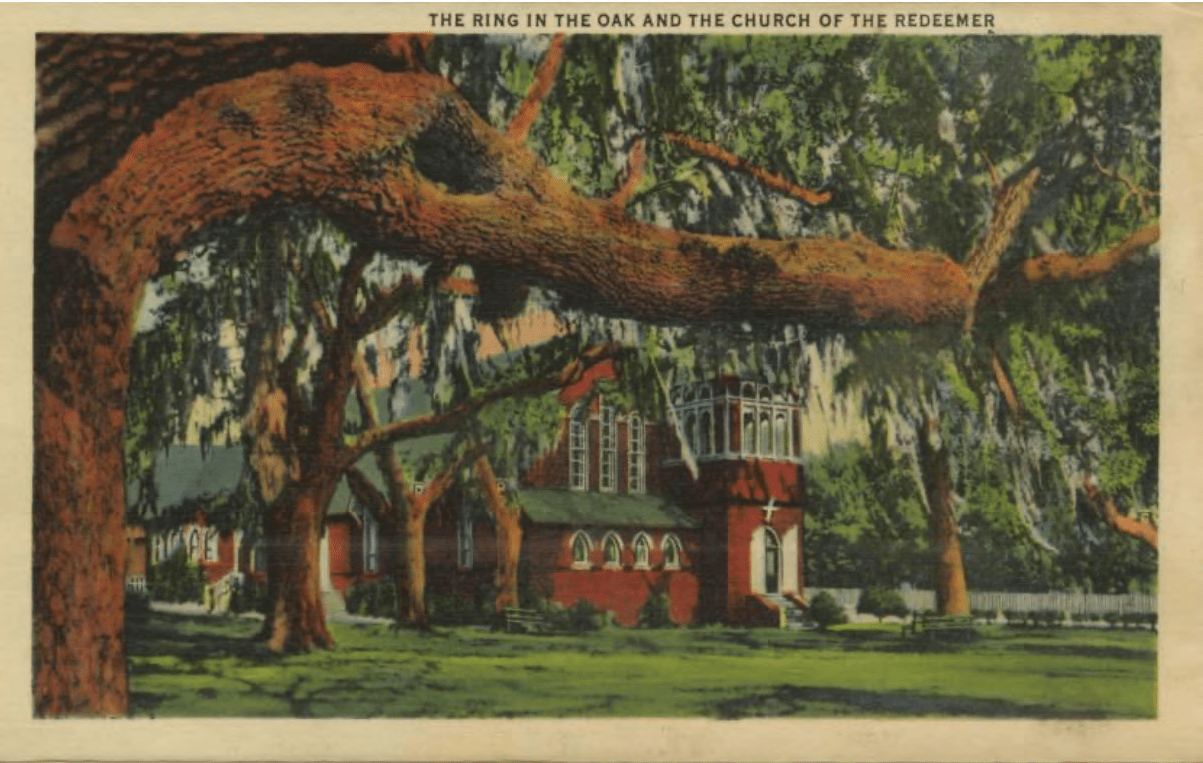Biloxi‘s Scenery: Graced with Greenery
Posted by Paige Gutierrez on Oct 12th 2023
This article originally written by Paige Gutierrez with the title "Our Trees". Paige is a local Biloxi writer for BNews Monthly, the monthly newsletter of the City of Biloxi. Photographs courtesy of the LHG Image Collection / Local History & Genealogy Department / Harrison County Library System unless otherwise specified.
Protecting Trees in the 1930s
On June 5, 1938, the Biloxi Tree Association held its first meeting, under a tree. Fifty Biloxi political and civic leaders sat beneath the mossy canopy of a giant, ancient live oak on the East Beach property of Mr. and Mrs. Garner Tullis. The purpose of the Tree Association was to preserve existing trees and to plant more. Its creation was prompted in part by the ongoing challenge of saving oaks, cypress, and other native trees when widening Highway 90. Within a month the club’s membership would grow to 267 people.
 Photo of the live oak on the Tullis property, under which the Biloxi Tree Association first met in 1938. Source: Biloxi Library Local History and Genealogy Collection.
Photo of the live oak on the Tullis property, under which the Biloxi Tree Association first met in 1938. Source: Biloxi Library Local History and Genealogy Collection.
The Daily Herald reported that speakers at the initial meeting included Biloxi Mayor Louis Braun, who “said that in his travels over the United States he had found nothing to compare with Biloxi’s trees, especially the live oaks. He said some of the fine trees had been removed, but that Biloxi now knows that a highway can be built around a tree and that tree saved.”
A year later the Tree Association would organize the Biloxi branch of the Live Oak Society, a group founded in 1935 at the Southwestern Louisiana Institute in Lafayette. Those live oaks believed to be one hundred years or older were designated as members and would hopefully receive special protection from damage and destruction. The Society’s constitution stated that “the Live Oak is one of God’s creatures that has been keeping quiet for a long time, just standing there contemplating the situation without having much to say, but only increasing in size, beauty, strength and firmness, day by day, without getting the attention and appreciation that it merits.”
Our Greatest Asset, Distinctly Our Own
Both the Tree Association and the Live Oak Society shared the belief that “our trees” were Biloxi’s “greatest asset,” one which distinguished Biloxi and other Mississippi coast towns from other coastal areas that did not have large beautiful trees near the shore.
The Daily Herald editors agreed. In June 1938, the editors endorsed the Biloxi Tree Association, writing that “forestry and tree preservation return a great material value in addition to the pleasure they give. The wooded shore on this Coast is a tremendous asset. In it we have just pride. Visitors enjoy the great Spanish oaks; the travelers are thankful for the trees along the highways… let us leave the beauty we now enjoy for the enjoyment of those who come after us.”
 Naval Reserve Park on the shore of Back Bay on the Biloxi peninsula, late 1930s. Before the United States government gave the property to the City of Biloxi for recreation in 1906, it was part of a Naval Live Oak Reservation, helping to assure availability of the live oak’s superior lumber in the days of wooden warships. The tree-filled park and its fishing pier were well-used by locals and tourists. The park became part of Keesler Field in 1941. Sources: KAFB, National Park Service.
Naval Reserve Park on the shore of Back Bay on the Biloxi peninsula, late 1930s. Before the United States government gave the property to the City of Biloxi for recreation in 1906, it was part of a Naval Live Oak Reservation, helping to assure availability of the live oak’s superior lumber in the days of wooden warships. The tree-filled park and its fishing pier were well-used by locals and tourists. The park became part of Keesler Field in 1941. Sources: KAFB, National Park Service.
###
Hungry for shrimp? Visit our Shop page to order wild-caught Gulf shrimp to be shipped to anywhere in the country today!

